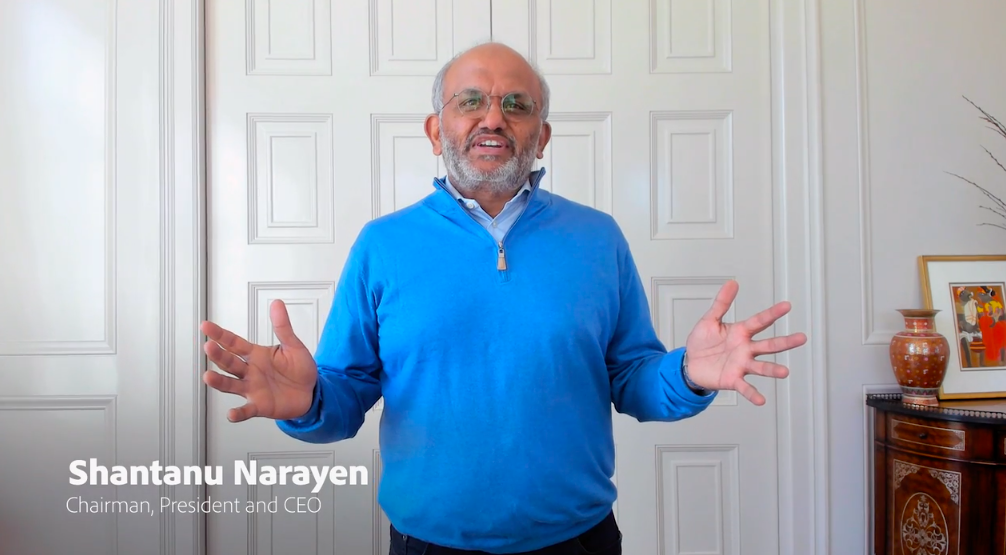
“Shots fired! Deputy down,” the call came over the radio.
As the wounded deputy lay in the grass off to the side of the road, he heard the frantic chorus of his fellow deputies trying to radio in their positions, continually cutting each other off to the point that no one had any idea what was happening.
All he could hear was chaos.
Finally, a voice — my father’s voice — cut through the cacophony of radio calls telling everyone to be quiet (I have it on good authority that his choice of words may have been slightly more colorful).
He then calmly and methodically gave the location of the incident and asked the closest responding units to identify themselves. One by one, the units responded, and the cavalry rode to the rescue.
Years later, that deputy would pull my father aside and tell him that the moment he heard the calm in my father’s voice, he knew that everything would be ok.
As we stare down this pandemic, this story is incredibly relevant because it reminds us that in the face of crisis, the very things we may be tempted to cast aside become all the more critical.
I even found myself saying it the other day: “Nobody cares about the customer experience during a crisis like this.” But as my own panic subsided, I realized that this casting off of the experience is the exact opposite of what we should be doing right now.

The Big Idea: The Real Essence of a Customer Experience
As much as I may preach against it from my (small) bully pulpit, I was falling into the trap of seeing the customer experience through a one-dimensional lens focused exclusively on the buying process.
If you’ve been following my work, however, you could have helped me see the error in my logic. The customer experience is transcendent and extends both before and after the buying process.
Moreover, a customer experience that delights your customer is not synonymous with one that makes them feel good or happy in some way — although that’s often a by-product. The true essence of a differentiated customer experience is one in which your customer feels that you see them, that you understand them (or at least seek to), and that you want to authentically meet their needs.
But as we are all collectively experiencing right now, sometimes having our needs met has nothing to do with making us happy, per se.
The most important thing to understand about delivering a customer experience throughout their journey is that it’s not one dimensional. If you are focused on the essence of the experience, there is no simple equation to follow because it demands that you understand your customer’s dynamically changing needs at every moment.
That is, admittedly, a much higher bar to meet, which is why so few organizations take this approach. And it’s why so many of them are coming across as utterly tone-deaf during this crisis.
The Impact: The Experience Difference in the Digital Era
The good news is that if you can get this right (which is unquestionably harder than it sounds — Exhibit A: my initial response), a proper experiential focus will make it painfully obvious how you should respond and react in almost any circumstance.
I spent some time this week sitting in on the now-virtual Adobe Summit (which is excellent and worth some time, BTW).

While it was still a bit too hyper-focused on the purchasing process, it did a great job of conveying the depth and richness of an experience that organizations must create if they are to survive in the Digital Era.
What they seem to understand — and, I would argue, are centering their suite around — is that an experience is fundamentally about a relationship. In the Digital Era, it is a relationship that is increasingly digitally-enabled, but a relationship nonetheless. And being a relationship, that makes the customer experience inherently human.
It is that connection to the inherent humanness in the customer experience that is essential — particularly during a crisis.
You must get past all the technology, tracking, demographics, psychographics, and journey workflows, and see your customers, partners, and employees as humans, first and foremost.
When you do so, you will immediately understand why your response to them during this pandemic is critical — and is a vital opportunity to build an authentic relationship with them.
The Next Step: Embrace Your Moment of On-the-Job Training
As I’ve covered in previous issues of Your Digital Future, the essence of design thinking is to start with an understanding of your customer’s needs and wants. The goal is to, in effect, put yourself in their shoes — to be empathetic with them.
What a perfect time to put these otherwise abstract ideas into practice.
Your fellow human is calling on the radio for help. This is your chance to embrace empathy — after all, we’re all going through some version of the same thing.
This is also your chance to embrace Design Thinking. Ask yourself, “What do our customers, partners, and employees REALLY NEED from us right now and how can we deliver it to them?”
Whatever the answer is, that is what you should be communicating and doing. As I said last week — and probably will be saying for a while — this is not a drill.
I repeat, this is not a drill.
This is real. It’s happening right now. Take a breath, stay calm, and go to the people that are counting on you with clarity, purpose, and humility.
That is the essence of a genuine human experience— and why this all matters so much right now.
